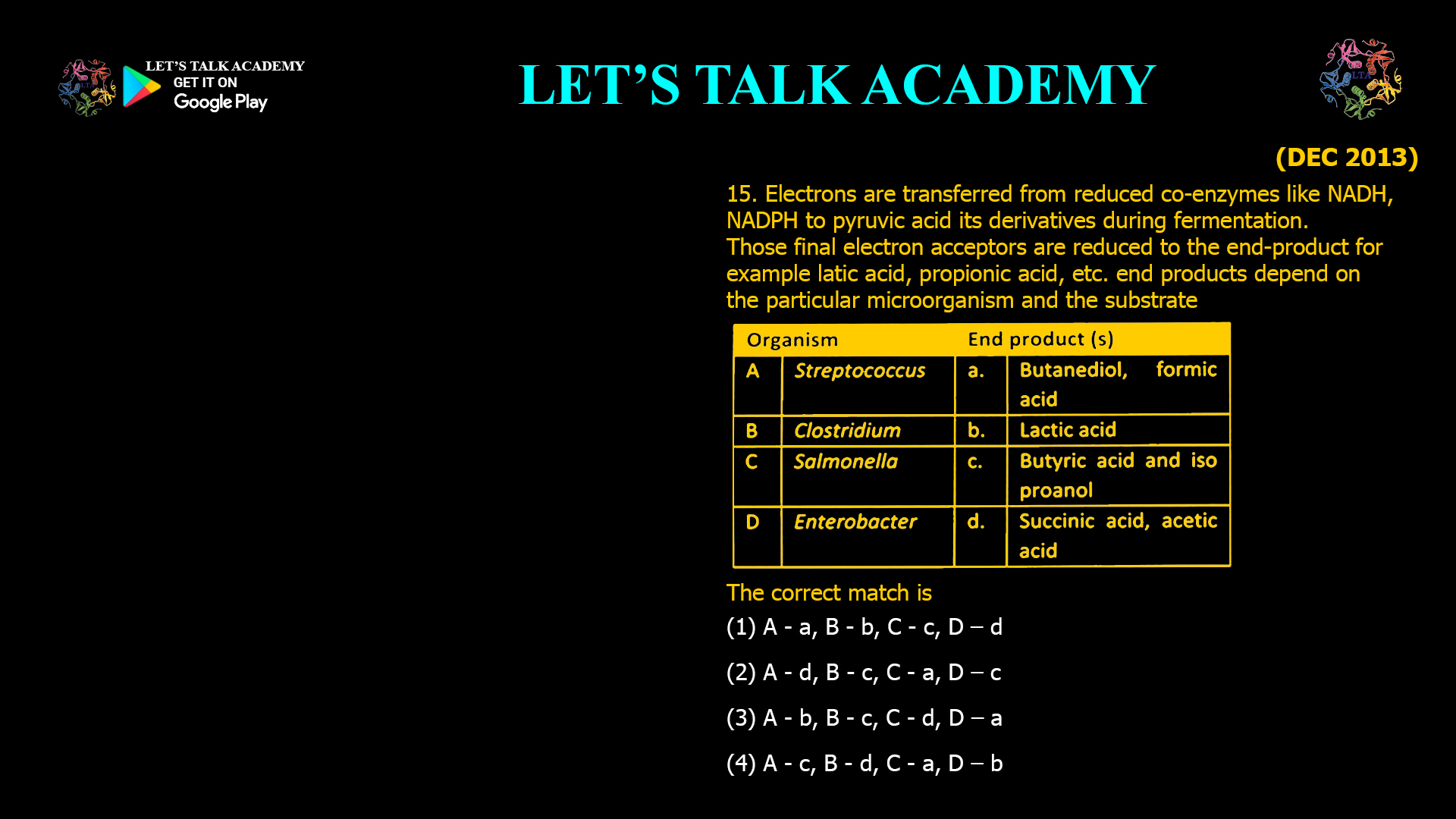- Electrons are transferred from reduced co-enzymes like NADH, NADPH to pyruvic acid its derivatives during fermentation. Those final electron acceptors are reduced to the end-product for example latic acid, propionic acid, etc. end products depend on the particular microorganism and the substrate
The correct match is
(1) A – a, B – b, C – c, D – d
(2) A – d, B – c, C – a, D – c
(3) A – b, B – c, C – d, D – a
(4) A – c, B – d, C – a, D – bCorrect answer: (3) A–b, B–c, C–d, D–a
From the image:
Organisms (List I)
A. Streptococcus
B. Clostridium
C. Salmonella
D. EnterobacterEnd products (List II)
a. Butanediol, formic acid
b. Lactic acid
c. Butyric acid and isopropanol
d. Succinic acid, acetic acidCorrect biochemical matches:
-
Streptococcus → lactic acid (homofermentative lactic acid bacteria) → A–b
-
Clostridium → butyric acid and solvents like isopropanol in butyric/solvent fermentation → B–c
-
Salmonella → mixed-acid fermentation giving succinic and acetic acids among products → C–d
-
Enterobacter → 2,3‑butanediol and formic acid in butanediol fermentation → D–a
So pattern A–b, B–c, C–d, D–a corresponds to option (3).
Option patterns:
-
(1) A–a, B–b, C–a, D–d – mismatches Streptococcus and Clostridium.
-
(2) A–d, B–c, C–a, D–c – mismatches Streptococcus and Salmonella.
-
(3) A–b, B–c, C–d, D–a – all four correct.
-
(4) A–c, B–d, C–a, D–b – all mismatched.
-



